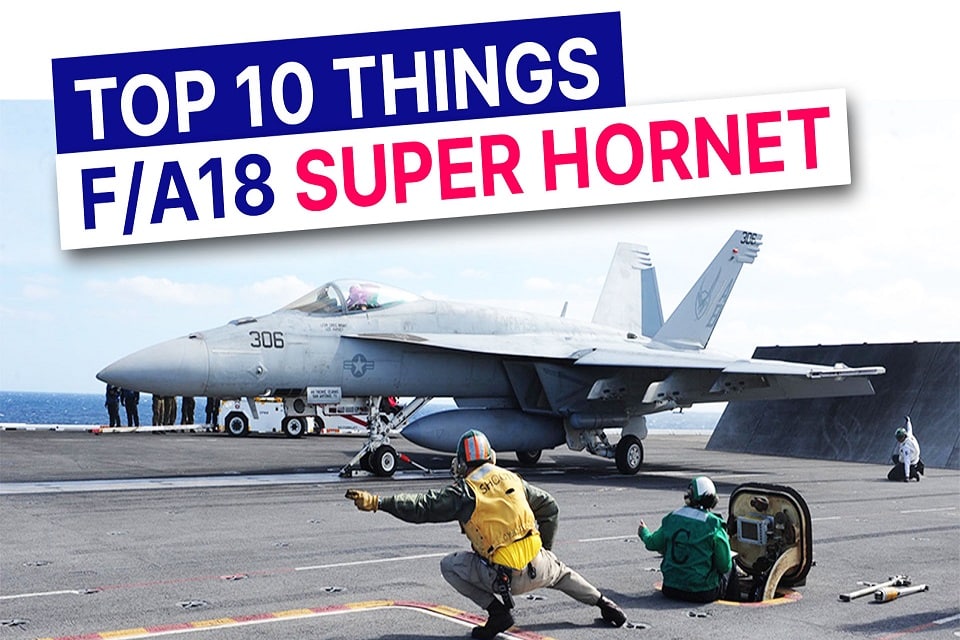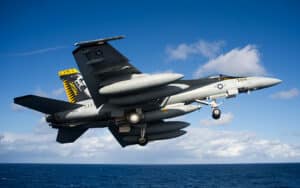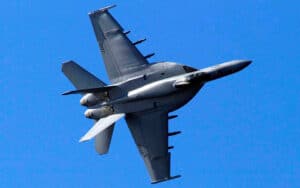Aerospace
Mind blowing facts about US Navy F/A 18 super Hornet fighter jet

This super Hornet has distinguished itself in combat zones as a deterrent or frontline offence, as well as at home providing security and defense to the United States and other countries, thanks to its proven capabilities. Because there are so many interesting facts about the F/A 18 Super Hornet, we’re looking at things we didn’t know about it.
- It was built in 1978
The Boeing F/A-18 Hornet is a fighter plane that was originally built by McDonnell-Douglas. It flew for the first time in 1978 and was initially introduced in 1983. The United States Navy is its primary customer. Because of its unique design, it can take off from aircraft carriers. The F/A-18 is capable of attacking both land and air targets. “Multi-role” refers to any aircraft that can accomplish this.
2. Air superiority, day/night strike
The F/A-18 Block III, the latest version of the F/A-18, can conduct a variety of tactical tasks including air superiority, day/night strike, and precision guided munitions. The single-seat E model and the two-seat F model of the Super Hornet are capable of performing virtually every tactical mission, including air superiority, day/night strike with precision-guided weapons, fighter escort, close air support, suppression of enemy air defenses, maritime strike, reconnaissance, forward air control, and tanker missions.
3. Combat operations for at least another decade.
Despite the fact that the 5th generation fighter aircraft in the US inventory has experienced repeated delays and cost overruns, the US Navy has no plans to retire the F/A 18 program, as the Department of Defense has approved a Block 3 upgrade of the F/A 18 fleet, which will allow it to continue performing combat operations for at least another decade. It has given its approval to enhance its version to compete with fighters of the fifth generation.
4. Next Gen single cockpit ACS Display.
The ACS in Super Block 3 improves pilot situational awareness and is a next-generation Block III feature. A new 10 x 19-inch touchscreen display in the Advanced Cockpit System allows the pilot to monitor, track, and target multiple long-range targets. Multiple functions can be controlled from a single Super Hornet large-area display.
5. It has max take of weight is up to 29,937 kg.
This fighter has a 37.5-inch wing spread, a 56-foot length, and a height of 15.3 feet. It has a maximum take-off weight of 29,937 kg, a maximum speed of 1,915 km/h, a range of 2,346 km, and a ferry range of 3,330 km. It accelerates climb to 228 meters per second. It also has a design load factor of 7.6 G.
6. It has Buddy refuel system.
It will be equipped with an aerial refueling system (ARS) or “buddy store” that will allow it to refuel other aircraft, making it a tactical airborne tanker. While the Super Hornet’s primary purpose is as a fighter, it also serves as a fuel tanker, proving its multi-role categorization. By adding external refueling equipment and five external fuel tanks, the aircraft can be turned into an airborne tanker. It has a maximum external fuel capacity of 5,914 kg and an internal fuel capacity of 6,241 kg. This is the massive capability.
7. It can carry massive weapons in its pod.
A quick glance at the Super Hornet’s weaponry reveals its enormous destructive potential: Joint Stand-Off Weapon; Joint Direct Attack Munition; Data Link Pod; Paveway Laser Guided Bomb; Harpoon, Harm, SLAM, SLAM-ER, Maverick missiles; Harpoon, Harm, SLAM, SLAM-ER, Maverick missile.
8. Easy to Maintain and Repair.
This fighter has a two-seater version, which allows it to fly for longer and operate efficiently in a battle zone. The F/A 18 was designed to be easy to maintain and repair, allowing it to fly for longer periods of time. Years later, this proved to be correct, since Super Hornets required less maintenance than other aircraft (75 percent less maintenance per hour of flight time than its predecessor, the F/A 14).
Indian LCA combat aircraft now being armed with American JDAM
9. It has folding wing option.
Because this aircraft has foldable wings, it takes up less space aboard the aircraft carrier and allows for more aircraft to be loaded. It’s perfect for catapults and other types of aircraft carrier ramps. An aircraft catapult is a system that enables aircraft to take off from a limited space and Ski-jump that can take off solely on the force of its engine. The Super Hornet may be outfitted for navy missions and has an arresting hook that can be deployed in a limited location and stopped in seconds.
This firm has awarded Boeing a new contract for up to 150 B737 max planes.
10, Blue Angel to use F/A 18 for aerobatic display.
The improved version of the F/A 18 Super Hornet flew for the first time in 1995, and by 2020, the business will have completed almost 608 units. The United States, the Royal Australian Air Force, and the Kuwaiti Air Force have all utilised this aircraft. The Super Hornets will be used by the US Aerobatic team Blue Angels in future . The F/A 18 was built for a total cost of $66.9 million.

Aerospace
Boeing Transfers Rocket Stage to NASA, Paving Way for Human Moon Mission

Boeing has achieved a significant milestone by providing NASA with the second core stage of the Space Launch System (SLS) rocket.
This crucial component, crafted at NASA’s Michoud Assembly Facility (MAF), is set to propel the Artemis II crew into lunar orbit, marking humanity’s return to deep space after a 50-year hiatus.
The monumental Boeing-built rocket stage, the largest element of the Artemis II mission, will embark on a journey aboard the Pegasus barge, traveling 900 miles to NASA’s Kennedy Space Center.
Comparison of two legendary aircraft B777x vs B747 aircraft:Click here
Upon arrival, it will be meticulously integrated with other essential Artemis II components, including the upper stage, solid rocket boosters, and NASA’s Orion spacecraft within the iconic Vehicle Assembly Building. This intricate integration process is a vital step toward the eagerly anticipated Artemis II launch, slated for 2025.
“Boeing-built products helped land humankind on the moon in 1969, and we’re proud to continue that legacy through the Artemis generation,” remarked Dave Dutcher, vice president and program manager for Boeing’s SLS program. “Together, with NASA and our industry partners and suppliers, we are building the world’s most capable rocket and paving the way to deep space through America’s rocket factory in New Orleans.”
NASA, Lockheed Martin Reveal X-59 Quiet Supersonic Aircraft:Click here
The delivery of Core Stage 2 marks a significant achievement in the evolution of the SLS rocket. Towering over 200 feet and powered by four RS-25 engines, this core stage, coupled with two solid-fueled booster rockets, will generate a staggering 8.8 million pounds of thrust. This immense power is crucial to launching Artemis II and future missions into the vast expanse of space.
The SLS rocket stands unparalleled in its capability to transport both crew and substantial cargo to the moon and beyond in a single launch. Its extraordinary capacity will facilitate the delivery of human-rated spacecraft, habitats, and scientific missions to destinations including the moon and Mars, ushering in a new era of space exploration.
-

 Travel1 week ago
Travel1 week agoAir India to Expand US Operations with Three New Routes After a Decade
-

 Travel2 weeks ago
Travel2 weeks agoWhy We Should Avoid These Stamps in a Passport
-

 Airlines1 month ago
Airlines1 month agoInvestigations Reveal Fake Chinese Titanium in Boeing and Airbus Jets
-

 Tech4 weeks ago
Tech4 weeks agoChina’s CATL Plans 1,800-Mile Electric Plane Launch by 2027
-

 Airport3 days ago
Airport3 days agoTop 10 Largest Airports in the World by Size
-

 Aerospace4 weeks ago
Aerospace4 weeks agoChina’s Fighter Jets Turn Wings into Autonomous Drones
-

 Airlines4 days ago
Airlines4 days agoAir India Rolls Out A350s for Delhi-New York JFK and Newark Routes
-

 Defence3 weeks ago
Defence3 weeks agoBoeing Enhances Chinook with New Engines and Block II Upgrades at $96 Million










